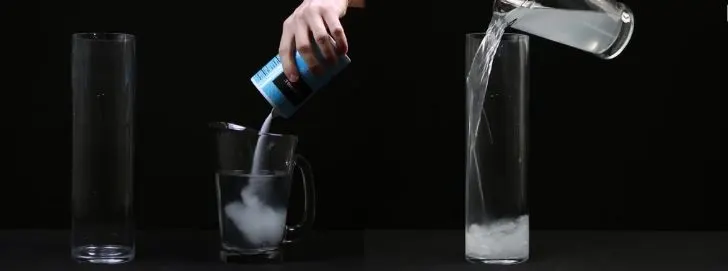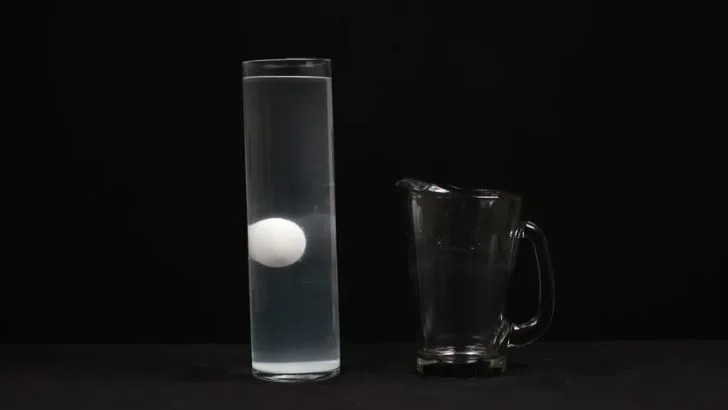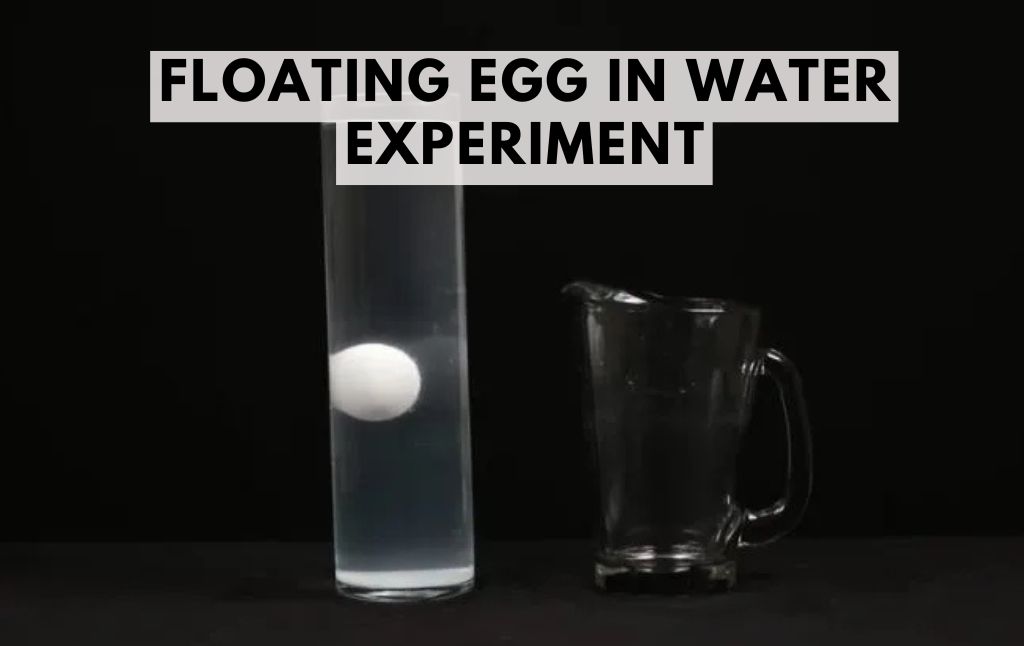Looking for a fascinating science experiment that’s easy to set up, safe for kids, and packed with “wow” factor?
This Floating Egg in Water experiment is a great way to explore the concept of density, while keeping little hands busy and curious minds engaged.
With just an egg, salt, and water, you can show how objects float or sink based on the liquid’s density — and even make the egg hover mid-glass! Let’s dive into this fun, floating experiment.
What You’ll Need:
- 1 raw egg (or a boiled egg if you prefer)
- Clear glass or jar
- Warm water
- Salt (lots of it!)
- Spoon for stirring
- Optional:
- Food coloring (for a fun visual layer effect)
- Timer (if you want to measure time for settling)
Instructions: Step-by-Step
Step 1: Create a Saturated Salt Water Solution

Fill your glass about halfway with warm water.
Add a generous amount of salt — keep stirring until no more salt dissolves.
You’ve made a saturated salt solution. Once salt starts collecting at the bottom, stop adding more.
Tip: Let the glass sit for several hours to allow any undissolved salt to fully settle to the bottom. This gives you a clearer saltwater layer.
Step 2: Add the Fresh Water Layer

Gently pour warm fresh water on top of the saltwater.
Pour slowly and carefully over the back of a spoon so the layers don’t mix.
Why warm water? Warm water is less dense and helps it sit on top of the saltwater without immediately mixing.
Step 3: Time to Test the Egg

Gently drop the egg into the glass.
Watch closely — the egg will float between the two layers instead of sinking or floating all the way to the top!
What’s Happening Here?
This experiment works because of density — the amount of mass in a given volume.
Salt water is denser than the egg, so the egg floats when dropped into saltwater alone.
Freshwater is less dense than the egg, so the egg sinks when placed in it.
But when you create a layer of saltwater at the bottom and freshwater on top, the egg finds a spot in between — suspended like magic!
This is a real-world demonstration of how submarines adjust their buoyancy, or how layers form in oceans and lakes based on salinity and temperature.
Learning Extensions
Here are some ways to extend the activity:
Try using more or less salt to see how it affects the egg’s floating height.
Use food coloring to visualize the saltwater and freshwater layers.
Talk about real-life examples of density differences in oceans, lakes, and even hot air balloons.
Challenge kids to predict what will happen if the layers mix — then stir and find out!
Science Behind the Experiment
Here’s the simple science:
Salt increases water’s density. When you dissolve a lot of salt in water, the water gets “heavier” (more dense).
An egg’s density doesn’t change, but it reacts differently depending on the liquid’s density.
The egg floats on saltwater, sinks in freshwater, and hovers between the two when both are layered.
Final Thoughts
The Floating Egg Experiment is a fun way to introduce scientific thinking, encourage questions, and explore physical science with everyday materials. It’s perfect for classrooms, homeschool projects, or just some kitchen-table science fun.
Try it today and float your way into science learning — one egg at a time!
Kids Activities
Looking for more fun kids activities and other ideas to keep kids engaged, learning, and having fun? Check out these:
How to Make a Solar System Rock Painting Craft
DIY Rock Photo Holder – A Nature-Inspired Craft for All Ages!
How To Make: Adorable Macrame Bunnies for Easter
Toilet Roll Easter Bunnies – Adorable DIY Craft for Kids & Parents
Easy Magnetic Levitation with a Pencil
Egg Drop Inertia Science Project: A Fun Physics Experiment for Kids!
Fireworks in a Jar: A Fun and Magical Science Experiment for Kids


Leave a Reply